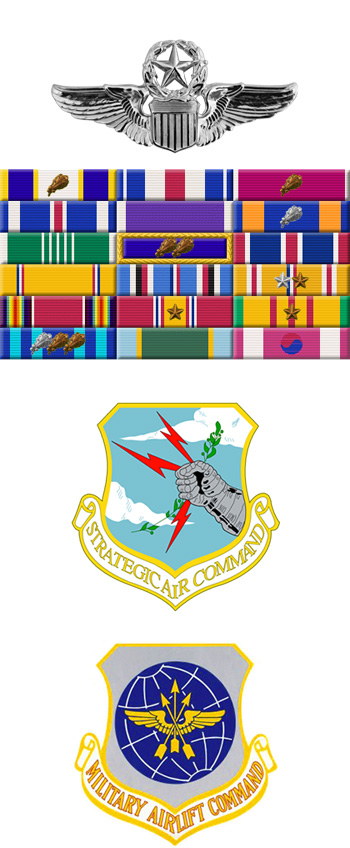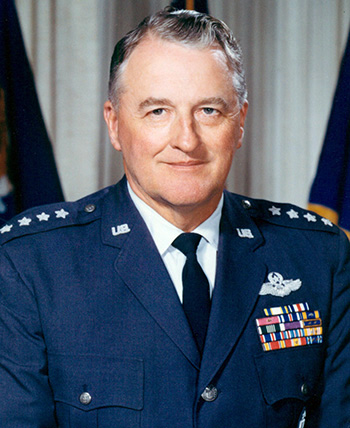
|
Paul K. Carlton |
 |
|||
| Rank, Service | ||||
General O-10, U.S. Air Force |
||||
| Veteran of: | ||||
|
||||
| Tribute: | ||||
Paul Carlton was born on April 14, 1921, in Manchester, New Hampshire. After attending the University of Pittsburgh and Ohio University, he enlisted in the Aviation Cadet Program of the U.S. Army Air Forces in September 1941, and was commissioned a 2d Lt and awarded his pilot wings at Albany Army Airfield, Georgia, in April 1942. After serving two years as a B-17 Flying Fortress instructor pilot, Capt Carlton served as a B-29 Superfortress pilot in the Pacific Theater the last year of the war. Following World War II, he served with the 509th Bomb Wing at Roswell AFB, New Mexico, from January 1946 to September 1949, followed by service as aide-de-camp to the Commander in Chief of Strategic Air Command, Gen Curtis E. LeMay, at Offutt AFB, Nebraska, from September 1949 to October 1953. His next assignment was to March AFB, California, where he served as Director of Operations for the 320th Bomb Wing and then as Director of Plans for 15th Air Force from October 1953 to January 1956. Col Carlton served as Director of Operations for the 3rd Air Division at Andersen AFB, Guam, from January 1956 to November 1957, followed by service as Deputy Commander of the 93rd Bomb Wing at Castle AFB, California, from November 1957 to May 1959. Gen Carlton next served as Commander of the 4126th Strategic Wing at Beale AFB, California, from May 1959 to August 1961, and then attended the National War College in Washington, D.C., from August 1961 to June 1962. His next assignment was as Commander of the 379th Bomb Wing at Wurtsmith AFB, Michigan, from June 1962 to November 1963, followed by service as Commander of the 305th Bomb Wing at Bunker Hill AFB, Indiana, from November 1963 to July 1965. Gen Carlton served on the staff of Headquarters Strategic Air Command at Offutt AFB from July 1965 to June 1967, and was the Deputy Chief of Staff for Operations for SAC from June 1967 to August 1968. His next assignment was as Commander of the 1st Strategic Aerospace Division at Vandenberg AFB, California, from August 1968 to March 1969, followed by service as Deputy Chief of Staff for Operations at Headquarters SAC from March to August 1969. Gen Carlton was Commander of 15th Air Force at March AFB from August 1969 to September 1972, and then served as Commander in Chief of Military Airlift Command at Scott AFB, Illinois, from September 1972 until his retirement from the Air Force on April 1, 1977. Gen Carlton was a Command Pilot with over 12,000 flying hours in the B-17, B-29, B-47 Stratojet, B-52 Stratofortress, B-58 Hustler, KC-135 Stratotanker, C-141 Starlifter, C-5 Galaxy, and the SR-71 Blackbird. Paul Carlton died on November 23, 2009, and was buried at the U.S. Air Force Academy Cemetery in Colorado Springs, Colorado. |
||||
|
||||

